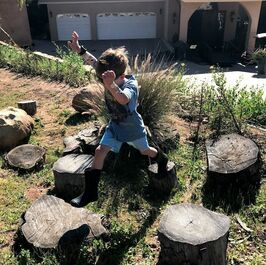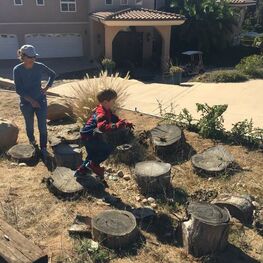|
Playing outdoors is a great learning opportunity for kids of all ages. It fosters exploration, encourages imaginative play and provides great opportunities for kids to practice their motor planning skills. Motor planning is the ability to conceive, plan, and perform a new motor movement as opposed to a habitual one. These are the moments when your body and brain are learning something brand new. Like when one first learns how to skip, get dressed, swing on the monkey bars, climb through a new obstacle course or learn a specific skill for a sport. Motor planning is a skill that we all use throughout the course of our lives. Without this skill, completing the tasks of everyday life would be incredibly frustrating and timing consuming if not impossible!
Motor planning occurs when we efficiently respond to the information within our environment. It allows us to:
Here at OT OuTdoors, we have a variety of activities to help our clients improve their motor planning skills. One of these interventions includes the use of the stump jump on our Sensory Trail. Pictured above is one of our 5 year old friends using the stump jump to work on his motor planning skills. Prior to jumping, he must first understand the requirement of the task (use the stumps to create a path), then formulate and plan his actions (which stumps to use) to cross the path. Once those visual and cognitive planning steps are completed, he then has to figure out how to step, jump, and balance from stump to stump. If he loses his balance his body must adjust in the moment with a postural response to prevent him from falling. Our fun outdoor treatment space allows “kids to be kids” and inspires them to want to work on their motor planning skills. Practicing in this natural environment allows them to efficiently transfer these learned skills to their own play environments like the playground, balancing on a wall along a board walk, or at home on their play structure. OT OuTdoors-because life doesn’t happen in a clinic
1 Comment
|
Archives
April 2024
Categories |



 RSS Feed
RSS Feed
